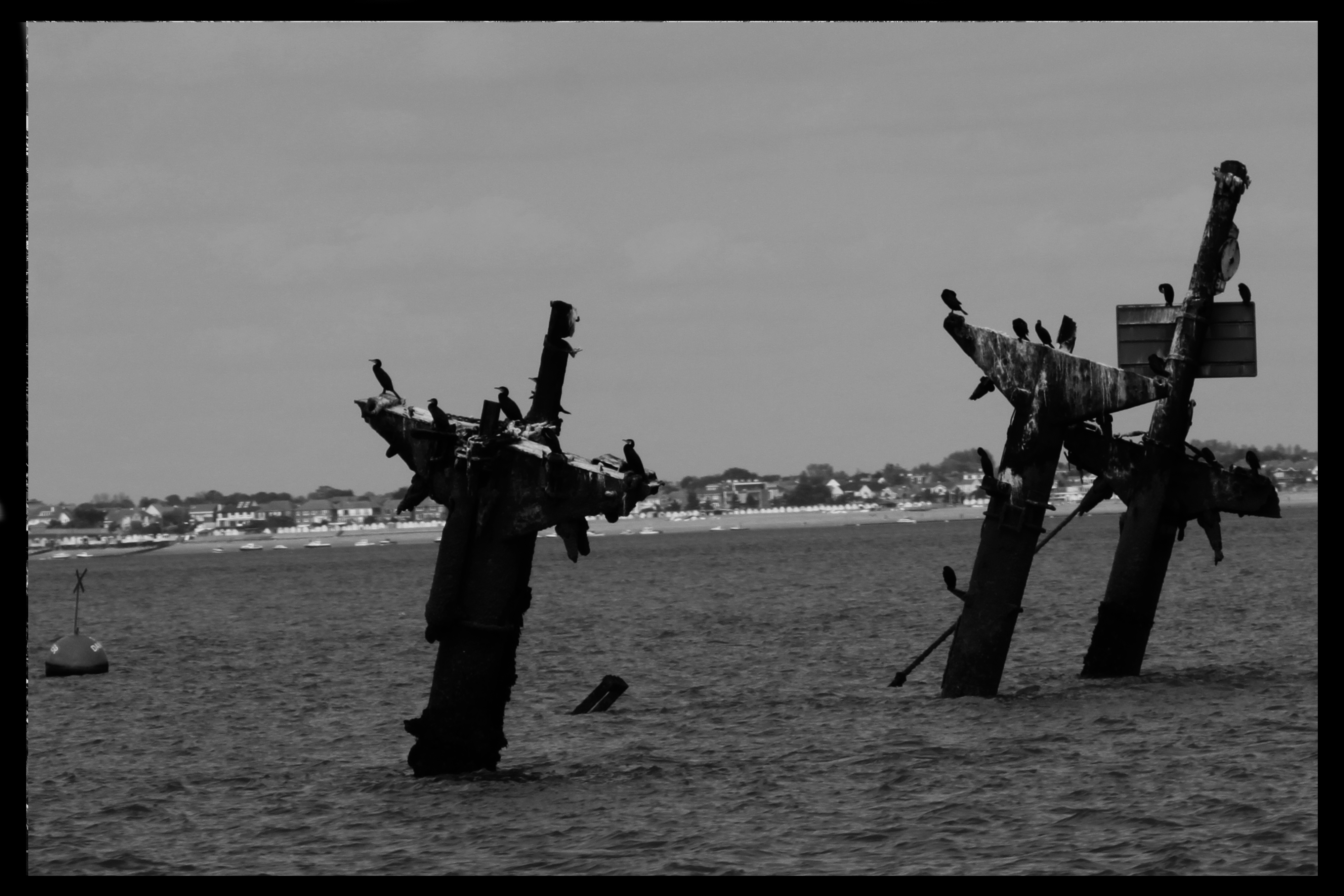SS Richard Montgomery, a US Liberty Ship, rests on a sandbank running east from the Isle of Grain approximately 250 metres north of the Medway Approach Channel in the Thames estuary and has done so since it ran aground on 20th August 1944.
Its an eerie sight, even on the brightest of days.

Built in 1943 by the St John’s River Shipbuilding Company, Jacksonville, she was one of in excess of 2,700 mass-produced vessels built for the WWII effort. Setting sail containing cargo of 7,000 tonnes of munitions she was directed to anchor in the Great Nore anchorage off Sheerness, to await formation of a convoy before heading to Cherbourg. Running aground in shallow waters just North of the Medway Approach Channel. Efforts to unload her cargo were intensive but a crack appeared in the hull by the next day and unfortunately the forward end begun to flood. Salvage continued until 25th September when she flooded completely and was abandoned. Remaining on the sandbank where she sank, her masts clearly visible above the water, there is something sinister about this ship.
Protected under Section Two of the Protection of Wrecks Act 1973, there is a no entry exclusion zone around her. Marked on the relevant Admiralty Charts and defined by coordinates—the physical site is marked by buoys in the water that act as a warning other ships in the area. There are also warning signs attached to the masts.

Why so much protection?
Approximately 1,400 tonnes of explosives remain aboard the forward holds and although water is a good mitigator (allegedly) the issue is the actual wreck around the explosives is decaying. Experts believe the decaying vessel could cause enough energy to detonate the bombs and if this occurred Sheerness could be flattened. The wave and subsequent momentum that would occur from the explosion would, it’s thought, travel the Thames flattening buildings along the way. Of course, there is a lot of speculation of how these explosives may behave after being submerged for such a long time but who needs to be taking such huge chances?
Another worry is the masts could be struck by a passing vessel and there have been many near misses over the years. Despite the exclusion zone being clearly marked, storms can be difficult to navigate and some of the larger ships, once set on their path are hugely difficult to turn. There are even internet photographs of a paddle boarder entering the exclusion zone and touching a mast. Those images are on google if you’re interested to view them—irresponsibility seems to be high on some people’s agenda.
Responding to decay and potential danger the plan is to remove the masts from this incredible ghost that sits within our estuary. A silent ticking time-bomb that will be costing £5M in danger money to preserve live and land. Its an incredible story and we are glad we got to view the Montgomery together before her masts disappear.
We were taken out from Southend-on-Sea by jetstreamtours.com who are based in Rochester, Kent. Their boat, Jacob Marley, has been kitted out in line within Covid-19 guidelines. Each table is divided with plastic divides and numbers are limited on each tour. Hand sanitiser is available and numbers are limited out on deck, with plenty of time for everyone to have their turn taking photographs at each of the sites visited. History of the area is shared by the captain who is very knowledgeable--not just on the sites you have paid to visit but on other hidden gems too.
by Donna Siggers and David Last
